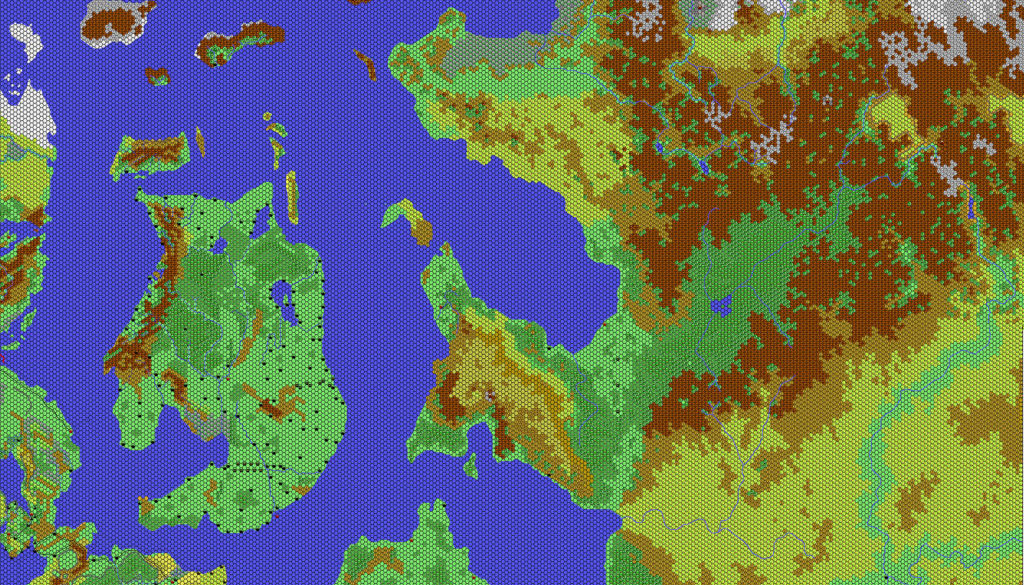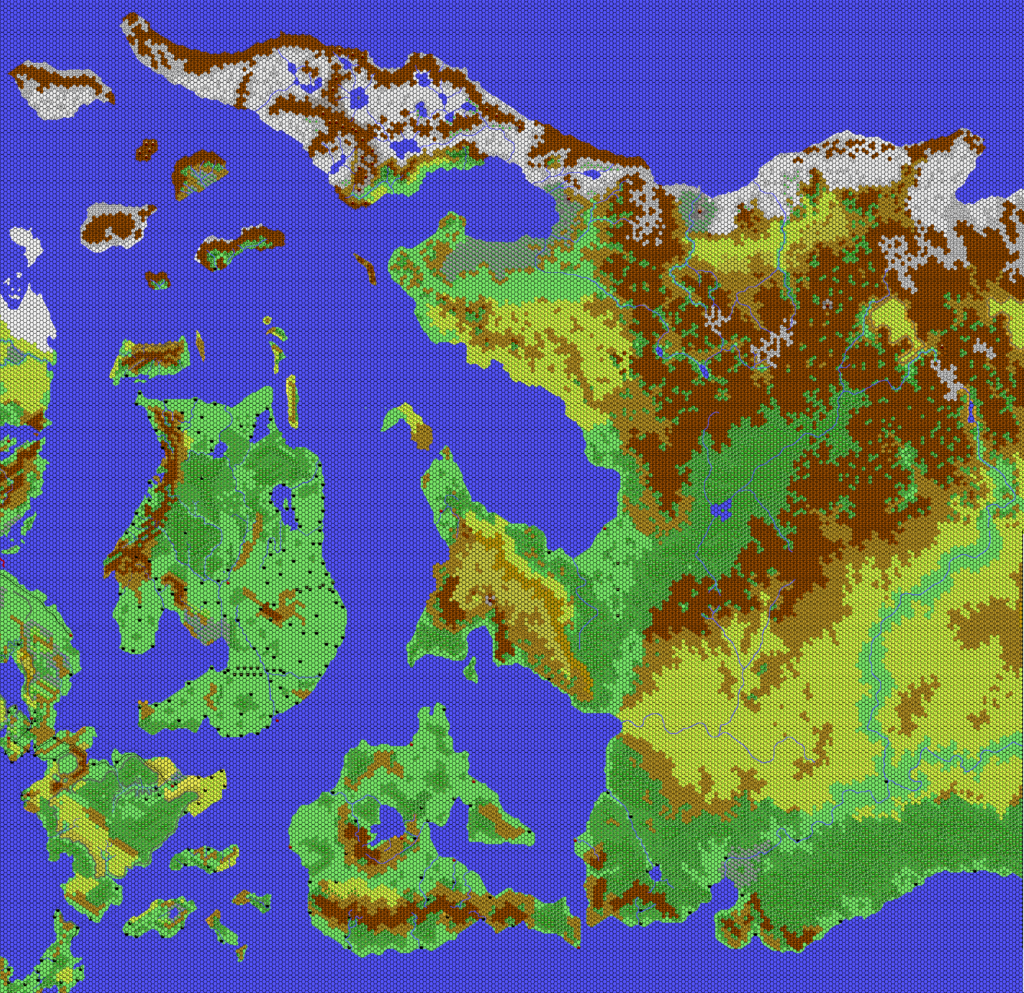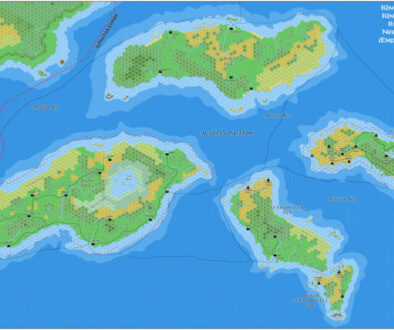Thibault’s Alphatian Sea, 24 miles per hex
Thibault posted this map under the title “Western Skothar”. It comprises the western half of Skothar alongside the Alphatian Sea region. I have named it Alphatian Sea because it is part of a set of two maps contrasting the state of the area before and after the events of Wrath of the Immortals.
Content-wise, the 1000 AC version is a straight crop of Thibault’s Mystara, 24 miles per hex map. It forms the base for the later 1010 AC version.
Since it’s a crop, I have dated it to April 2002, concurrent with the parent map. But in fact it may well have been posted together with its sister 1010 AC map, in which case it dates instead from October 2003.
Fan-made Map by Thibault Sarlat (April 2002)
This is an original map created by one of Mystara’s excellent fan cartographers. For more information on the cartographer, including a gallery of all their maps, see also Appendix M: Mappers of Mystara.
Sources
- Dawn of the Emperors (1989) (PDF at DriveThruRPG)
- Wrath of the Immortals (1992) (PDF at DriveThruRPG)
- Poor Wizard’s Almanac (1992)
- Poor Wizard’s Almanac II (1993) (PDF at DriveThruRPG)
- Poor Wizard’s Almanac III (1994)
Fan Sources
- Thibault’s Mystara, 72 miles per hex 2000
- Thibault’s Alphatian Sea, 72 miles per hex (2000)
- Thibault’s Mystara, 24 miles per hex (2002)
References
- All of Thibault’s maps at the Atlas of Mystara
- Thibault’s entry in Appendix M: Mappers of Mystara (upcoming)
- Thibault’s author page at the Vaults of Pandius
Chronological Analysis
This is a fan-made map. It was published in 2002. The updated Atlas version of this map is not yet available. See also Appendix C for annual chronological snapshots of the area. For the full context of this map in Mystara’s publication history, see the upcoming Let’s Map Mystara 2002. (Please note that it may be some time before the project reaches this point.)
The following lists are from the Let’s Map Mystara project. Additions are new features, introduced in this map. Revisions are changes to previously-introduced features. Hex Art & Fonts track design elements. Finally, Textual Additions are potential features found in the related text. In most cases, the Atlas adopts these textual additions into updated and chronological maps.
Coming Soon





